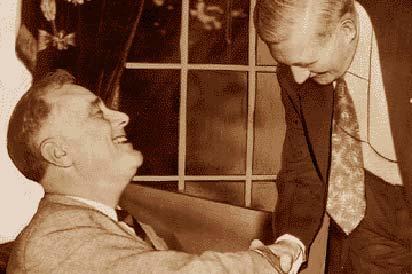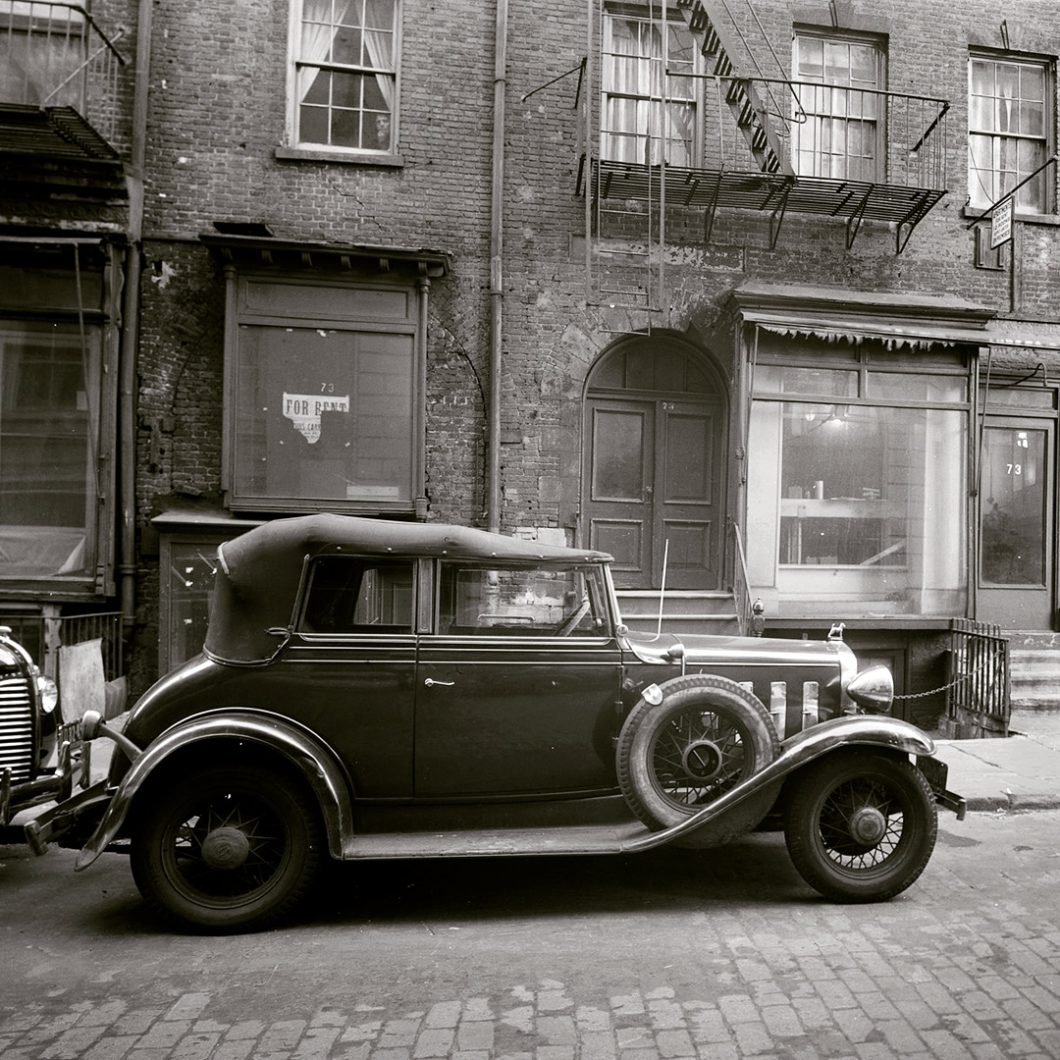99% of the photos you see here are originals, but sometimes it’s nice to show something else – and today we’re time traveling to NYC circa 1940.
Photog Stanley Mixon took this shot on Washington street for the Historic American Buildings Survey (HABS). Much of this block would soon be wiped out by the Manhattan approach for engineer Ole Singstad’s Battery Tunnel, and HABS, a program of the National Park Service that functioned a little like the WPA, was an early part of the historic preservation movement.
Lucky for us, Mixon also captured this amazing vehicle – a 1932 Chevrolet Landau Phaeton – Just 1,602 of the $650 cars were built. Other period shots reveal that it was a regular resident, and given how NYC chewed up cars then and now, it looks in great shape for an 8 year old car in the 1930s.
1932 is a year heavily associated with the new Ford V8, but Chevy was actually the most popular car in America in 1932, and Chevy had been on Ford’s heels or ahead since the 1927 shut-down that saw the transition from the Model T to the Model A.
“Big Bill” Knudsen
Under the leadership of Danish-born William “Big Bill” Knudsen, Chevrolet had gone from near death in 1921 to topping Ford in sales in 1927-28, then again in 1931-34; but Knudsen was originally a Ford man.
He arrived at Ellis Island in February, 1900 and by 1911 was for a parts manufacturer in Buffalo which was bought by Ford in that year. He rose quickly within Ford. A production and process wizard, he helped design Ford’s Rouge works – but he clashed with Henry Ford over production strategy, the Model T’s archaic design, and Ford’s personal views. He couldn’t reconcile his conscience with his issues with Ford, so he departed in early 1921 – landing at GM by the end of the year.
He was appointed to fix Chevrolet by Pierre DuPont after a year in which Chevy lost nearly $9M, and he was faced with many immediate challenges – it’s possible that if he’d failed, we wouldn’t have a Chevrolet today. Despite having to write off Charles Kettering’s disastrous “Copper cooled” Chevy in 1923, Knudsen took the division from strength to strength.
Knudsen perpetually pushed Chevy’s staff and dealers, in 1924 demanding they go “vun for vun,” in his accented English, with Ford.
He was a colorful and charismatic leader and one who could easily recognize market trends. In 1929, Chevrolet debuted the “Stovebolt” six, a cast Iron six that in Knudsen’s view and in the public’s eye, offered “A six for the price of a four.” The legendary engine would be Chevy’s sole powerplant into 1954 and survive for decades.
Creating a “Baby Cadillac”
By 1930, he’d enlisted Harley Earl’s “Art & Colour” to make the Chevies more stylish. With rumors of a V8 Ford coming in ‘32, Earl and his team purposefully used cues from the ‘31-’32 Cadillacs to style the Chevy. In mid-1931, Fisher body had also begun building the Landau Phaeton, a four-place proper convertible with detachable B-pillars and retracting windows – a coach convertible usually seen on cars like, well, Cadillacs.
The $650 Landau Phaeton couldn’t quite match the Ford V8 for speed, but it was smooth and reliable, and every inch a “baby Cadillac.” Sadly, the slow-selling variant didn’t survive Chevy’s 1933 restyle.

From 1927-33, Chevrolets had series numbers and names – AA/Capitol (1927), AB/National (1928), AC/International (1929), AD/Universal (1930), AE/Independence (1931), BA/Confederate (1932), CA/Master Eagle and CC/Standard Mercury (1933). After that, they settled on roughly “Standard” and “Master,” all after 1929 were powered by the Stovebolt.
Knudsen became GM’s president in 1937, departing in 1940 to help organize war production at the behest of President Roosevelt on the recommendation of financier Bernard Baruch, around the time Mixon took this picture.
Knudsen played a key role in organizing wartime airplane production, particularly that of the B-29 Superfortress.

